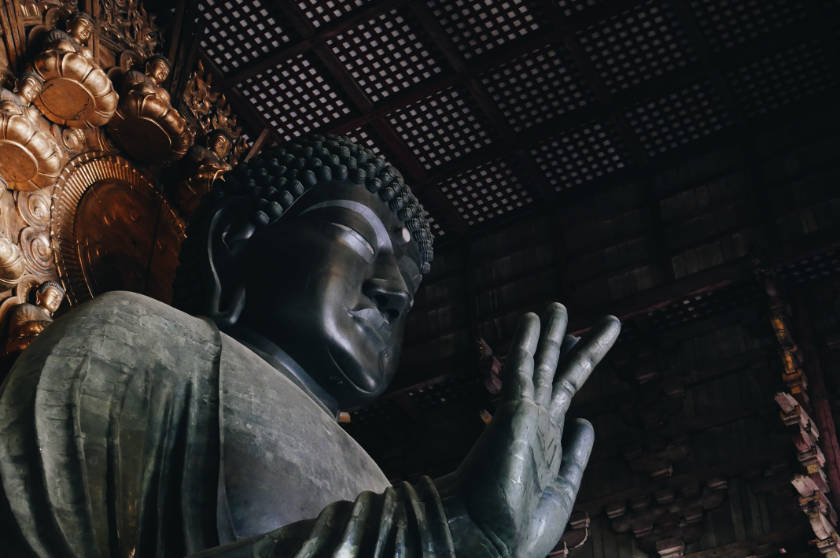By Justin Schroth
If you find yourself wandering just east of Osaka, you may find yourself in Nara, one of many cities surrounded by traditional cultural experiences. Over a thousand years ago this city was once the Capital of Japan (from 710 to 794) and all in it was considered sacred. This included the animals, and one in particular was considered divine because its connection to deities at the time, this animal was the Deer. In this and various parts of Japan, whether it was deities riding on pale white deer or simply crossing your path with one, deer were the “Messengers of the Gods” and potential good fortune (If you wish to learn more, you can find more information by Ogata, Noburu here: http://www.hgeo.h.kyoto-u.ac.jp/soramitsu/NaraDeer.html)

Though no longer held in the same divine status, today Nara is still popular for its deer inhabitants, and as you can see in my pictures, they are everywhere. The locals do very well in taking care of the area and handling the deer (it seems that they patrol the area to ensure that there was no visible mess left laying around from the deer), so strolling around was a very pleasant experience (and very Accessible as much of the area is barrier-free). You can even purchase deer crackers from various areas nearby to feed to the deer (and they know what they are and will come up to you if they see them). However, keep in mind the deer are still technically wild animals, so avoid antagonizing them and approach carefully. You can also buy yourself a snack too (just don’t feed people food to the deer), while here we happily got ourselves some delicious Dango between meals.

After our snack, we continued to the next local wonder, one of Japan’s largest wooden buildings housing the world’s largest bronze statue of the Buddha. If you cannot walk up the steps, you can go around the side of the gates, and go around the left side of the temple grounds to find an access ramp into that area. While the side access doesn’t have you enter to the Buddha directly, it was still impressive to see the building at an angle (and it also felt like VIP-access taking a path the general public usually doesn’t get to see).

Inside the temple was no less impressive than the outside. It housed various bronze statutes, sculptures, a model of the temple grounds, and of course the Daibutsu (大仏) or Great Buddha. Because Of the low lighting it was difficult to get a good picture. Still, had we a perfectly lit picture of the Buddha, it would pale in comparison to witnessing it firsthand. The sheer size and scale of both the Buddha and the building is difficult to comprehend from pictures alone.
If you enjoy traditional Japanese culture and history, then you may find that Nara is an excellent area to explore as there is much more to see then what is mentioned here (in fact, you may wish to consider planning a whole day in Nara).
Accessibility Notes:
- If driving from Osaka it is approximately 36-minutes, parking wasn’t too difficult to find.
- If riding trains from Osaka it is approximately 67-minutes, may require switching multiple trains along the way, both stations in Osaka and Nara are wheelchair accessible.
- Mostly flat stone or paved walkways that may be a little bumpy in parts but nothing largely inconvenient.
- The large gates leading to the Buddha have steps but can be bypassed by going around.
- To avoid the main entrance steps required to enter the Buddha temple grounds, go around left from the main entrance and there will be a ramp.
References
Ogata, Noburu. “Soramitsu, History and Geography of Nara, Japan.” Graduate School of Human and Environmental Studies, Kyoto University, http://www.hgeo.h.kyoto-u.ac.jp/soramitsu/NaraDeer.html.
Feature Image: Photo by Mirko Blicke on Unsplash
Buddha Image: Photo by Falco Negenman on Unsplash
0 Comments